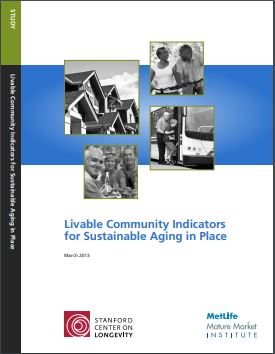Research for this report was conducted by Amanda Lehning, PhD, Postdoctoral Fellow at the University of Michigan School of Social Work, and Annie Harmon, PhD Candidate, University of Michigan School of Public Health in collaboration with the Stanford Center on Longevity.
Aging in place is the ability to remain in one’s own home or community in spite of potential changes in health and functioning in later life. Aging in place has received an increasing amount of attention in recent years. This is due to a number of factors, including the aging of the population, a potential increase in chronic disease and disability in future cohorts of older adults, and an inadequate U.S. long-term care system. Furthermore, a survey by AARP in 20031 and another survey by the AdvantAge Initiative in 20042 demonstrated that an overwhelming majority of adults would like to remain in their own homes for as long as possible.
Down load full PDF here


